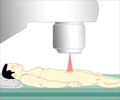An analysis of three ongoing, cumulative registry studies involving more than 1,000 men has found no evidence.

Lead investigator Ahmad Haider, MD, PhD, urologist, Bremerhaven, Germany, states that although considerable evidence exists indicating no relationship between testosterone and increased risk of developing prostate cancer, decades of physician training with the notion that testosterone was fuel for prostate cancer made it difficult to dispel such fallacy and the myth continued to persist.
Haider added that nevertheless, in the absence of long-term follow-up data demonstrating reduced risk of prostate cancer in hypogonadal men who were receiving testosterone therapy, considerable skepticism remains throughout the medical community and this was an expected natural and acceptable path of medical and scientific discourse.
A total of 1,023 patients on testosterone therapy were followed for up to 17 years with a median follow-up of approximately 5 years. Two study cohorts of 261 (cohort 1) and 340 (cohort 2) men were treated by urologists since 2004 and a third cohort of 422 men was treated at an academic andrology center since 1996. Hypogonadism was diagnosed if testosterone was =12 nmol/L and if other symptoms were present, such as erectile dysfunction, fatigue, depression, or unfavorable changes in body composition (gaining of FAT mass and waist circumference despite physical activity).
The research concluded that there were six (2.3 percent) diagnoses of prostate cancer in cohort 1, there were five (1.5 percent) diagnoses of prostate cancer in cohort 2, and all biopsies were negative in cohort 3. Prostate cancer incidence per 10,000 patient-years in cohorts 1 and 2 was 54.4 and 30.7, respectively, which is lower than 116 reported by the PLCO (Prostate, Lung, Colorectal, and Ovarian Cancer Screening Trial) and 96.6 reported by the ERSPC ( European Randomized Study of Screening for Prostate Cancer).
The study is published in the Journal of Urology.
Advertisement

![Prostate Specific Antigen [PSA] & Prostate Cancer Diagnosis Prostate Specific Antigen [PSA] & Prostate Cancer Diagnosis](https://images.medindia.net/patientinfo/120_100/prostate-specific-antigen.jpg)











